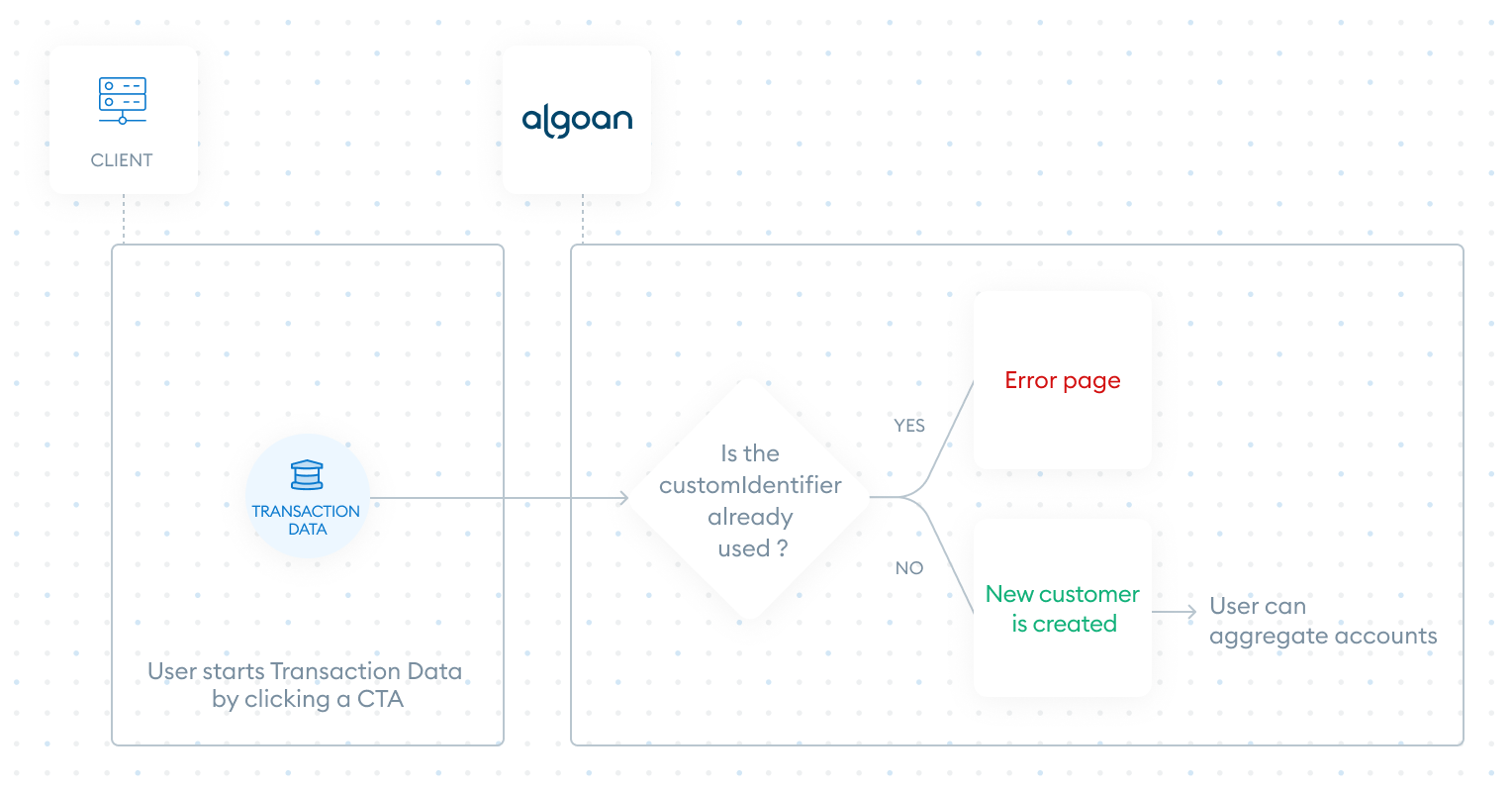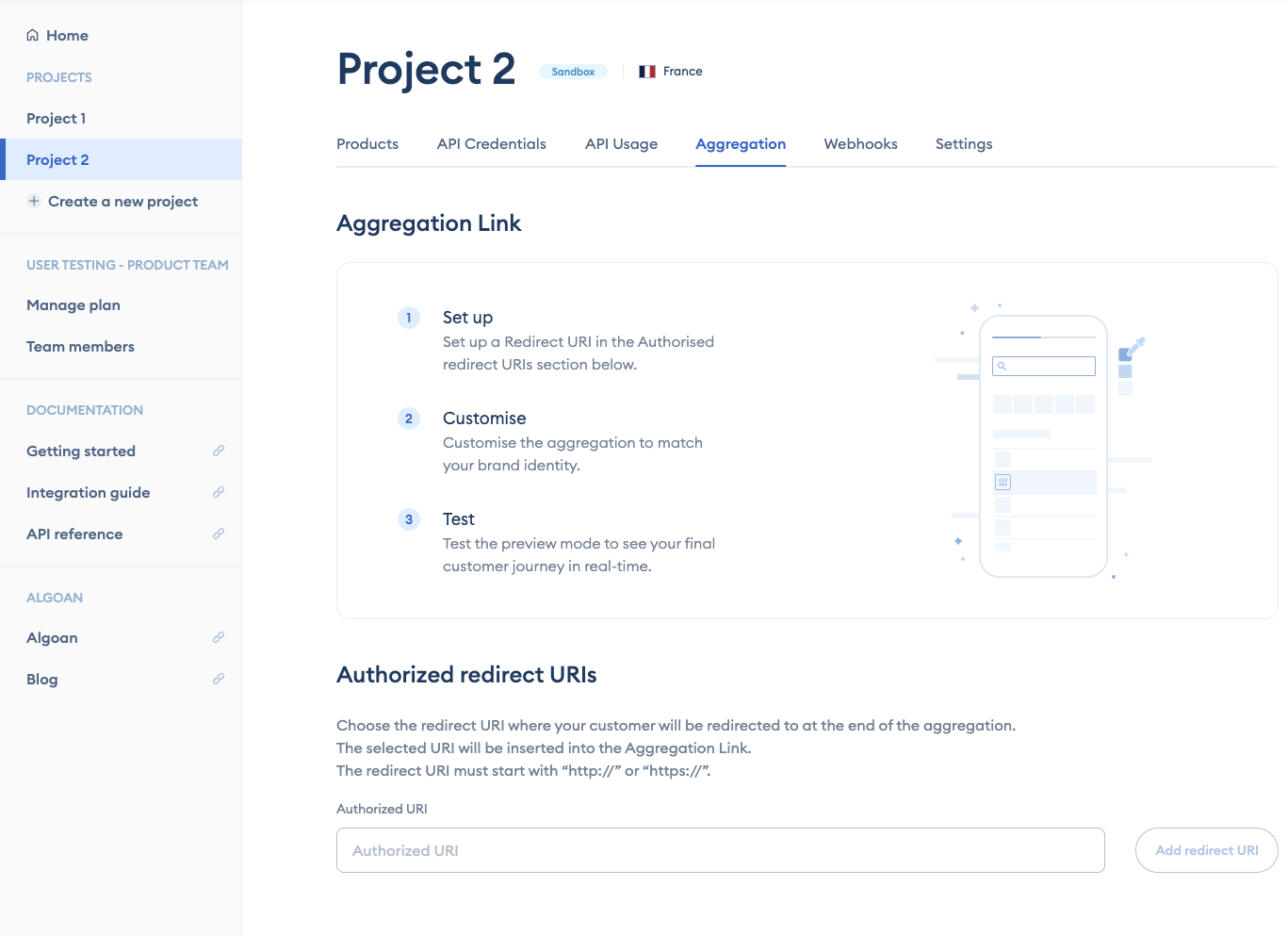This section covers the different ways to access Transaction Data and the different use cases associated
Introduction
There are two ways of accessing Transaction Data :
- One-time access
- Permanent access
Algoan's concept of users is linked to customIdentifier : an Algoan customer object is uniquely defined by a customIdentifier, in the scope of a project.
One-time access users can only access Transaction Data once. If they exit the journey, they cannot come back again or an error will be thrown :

Image 1 - One-time user description
Permanent access users can access Transaction Data journey multiple times :

Image 2 - Permanent user description
Option 1 : One-time access
To redirect a user to the Transaction Data journey, you need at least a clientId and a redirect address.
The link format is as follows:
https://connect.algoan.com/v2/init?client_id=clientId&redirect_uri=myRedirectUri
When accessing Transaction Data this way, a customer and its associated customIdentifier are automatically generated.
If you don't want the customIdentifier to be automatically generated, you can specify it as a query parameter of the previous URL:
https://connect.algoan.com/v2/init?client_id=clientId&redirect_uri=myRedirectUri&custom_identifier=customIdentifier
When transitioning to a production environment, it is imperative to include the query parameter custom_identifier. This identifier serves the purpose of associating customers with their corresponding analyses based on your internal references. This identifier is the unique way of effectively mapping users to their analyses.
Option 2 : Permanent access
In both scenarios above, the customer is automatically generated when clicking the link.
An alternative approach is to create the customer and an associated session manually. This involves a two-step process:
- Customer creation: Initiate the customer creation by calling the POST /register route. You will need to provide the
custom_identifierhere. - Session creation: Follow up with session creation using the POST /sessions route.
You only need to create the customer once. If you have saved the customerId in your database, you can directly generate a new session for the user without needing to reengage with the customer creation process.
Here is the form of the Aggregation Link : https://connect.algoan.com/v2/init?client_id=your_client_id&redirect_uri=your_redirect_uri&session_id=your_session_id&code=your_temporary_code
Here is the sequence diagram explaining the authentification of a user in Permanent User mode :

Image 3 - Sequence diagram of the authentication of user
Client Id
In the link there a client_id parameter. To find the value of this parameter, go to "Aggregation" tab then "Credentials". You can directly copy it from there.

Image 4 - Client ID inside Algoan's Console
Redirection URI
Trying to send your users to an Aggregation link with a redirect_uri that has not been whitelisted by yourself in the Console will result in an error
The first time you go the Aggregation tab on the Console, you will have to define a redirect URI (see image 4 below).
To add an authorized redirect URI, go to “Aggregation” tab and click on “add redirect URI”.

Image 5 - Aggregation tab when no redirect URI has been defined
You can add a wildcard in your redirect_uri. For instance you can define the following redirect URI https://mywebsite.com/* . Now when you build the link, all the following redirect_uri will work :